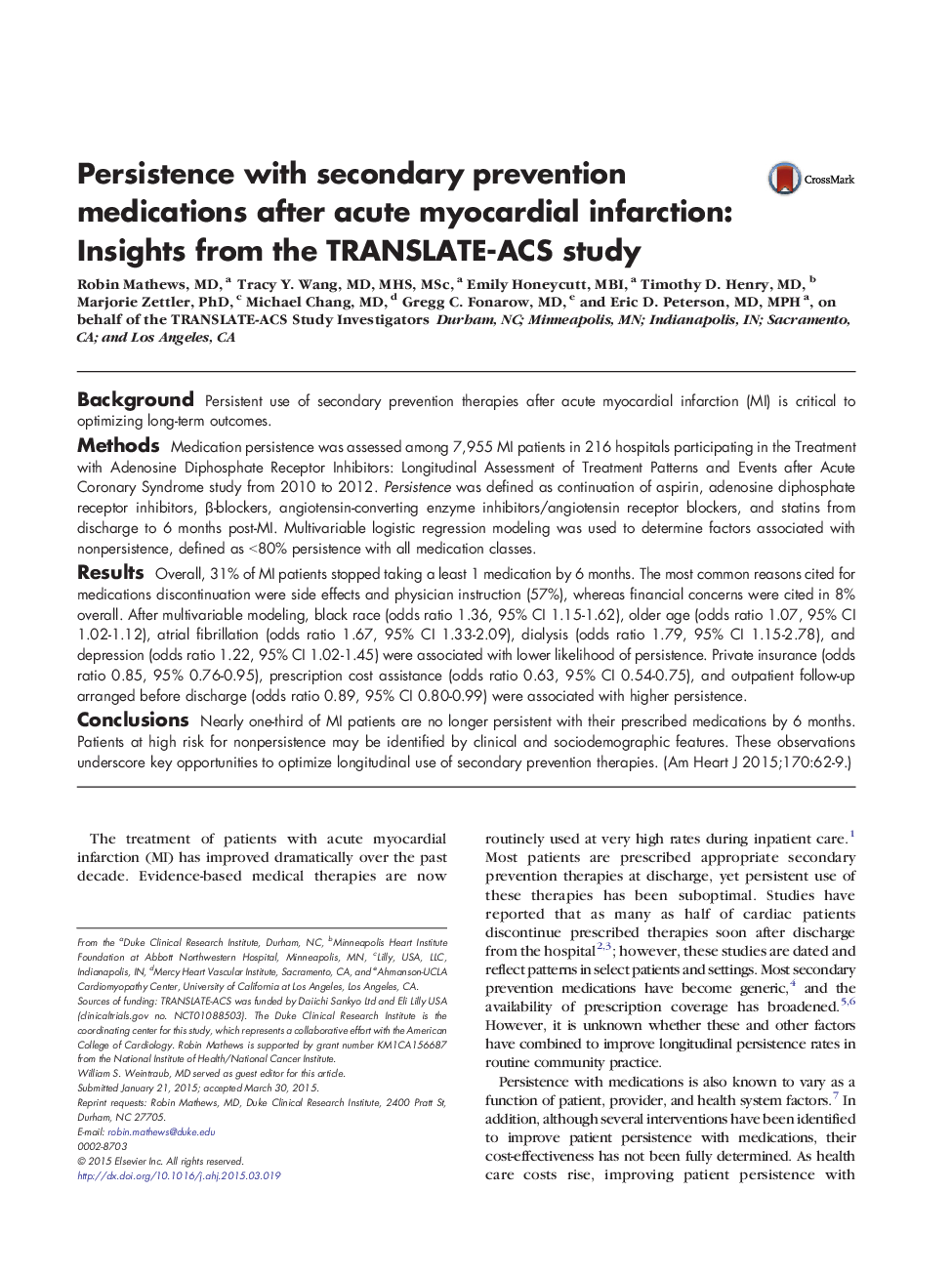| Article ID | Journal | Published Year | Pages | File Type |
|---|---|---|---|---|
| 5928149 | American Heart Journal | 2015 | 8 Pages |
BackgroundPersistent use of secondary prevention therapies after acute myocardial infarction (MI) is critical to optimizing long-term outcomes.MethodsMedication persistence was assessed among 7,955 MI patients in 216 hospitals participating in the Treatment with Adenosine Diphosphate Receptor Inhibitors: Longitudinal Assessment of Treatment Patterns and Events after Acute Coronary Syndrome study from 2010 to 2012. Persistence was defined as continuation of aspirin, adenosine diphosphate receptor inhibitors, β-blockers, angiotensin-converting enzyme inhibitors/angiotensin receptor blockers, and statins from discharge to 6 months post-MI. Multivariable logistic regression modeling was used to determine factors associated with nonpersistence, defined as <80% persistence with all medication classes.ResultsOverall, 31% of MI patients stopped taking a least 1 medication by 6 months. The most common reasons cited for medications discontinuation were side effects and physician instruction (57%), whereas financial concerns were cited in 8% overall. After multivariable modeling, black race (odds ratio 1.36, 95% CI 1.15-1.62), older age (odds ratio 1.07, 95% CI 1.02-1.12), atrial fibrillation (odds ratio 1.67, 95% CI 1.33-2.09), dialysis (odds ratio 1.79, 95% CI 1.15-2.78), and depression (odds ratio 1.22, 95% CI 1.02-1.45) were associated with lower likelihood of persistence. Private insurance (odds ratio 0.85, 95% 0.76-0.95), prescription cost assistance (odds ratio 0.63, 95% CI 0.54-0.75), and outpatient follow-up arranged before discharge (odds ratio 0.89, 95% CI 0.80-0.99) were associated with higher persistence.ConclusionsNearly one-third of MI patients are no longer persistent with their prescribed medications by 6 months. Patients at high risk for nonpersistence may be identified by clinical and sociodemographic features. These observations underscore key opportunities to optimize longitudinal use of secondary prevention therapies.
